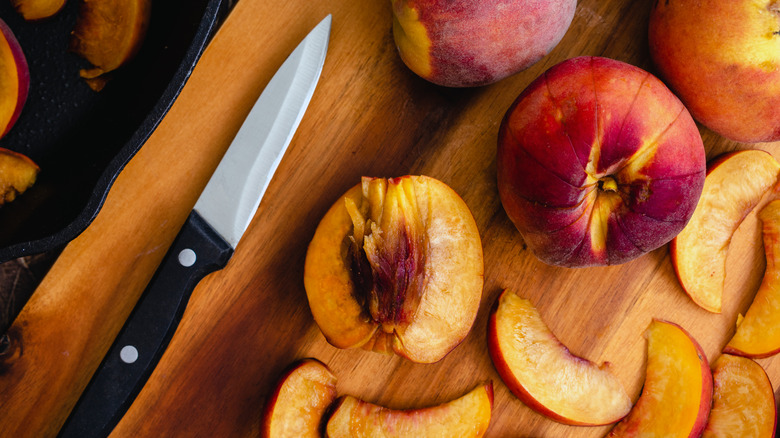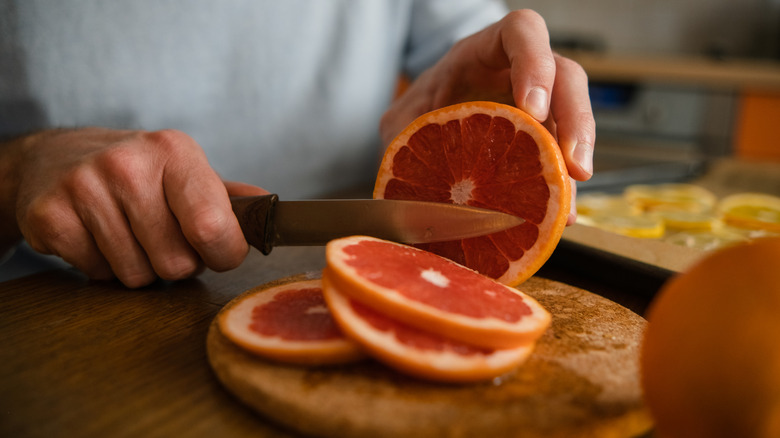The Type Of Knife That's Ideal For Cutting Fruit
Of all the tools you can reach for to slice up fruit, one knife takes first place every time, and any fruit lover can tell you that paring knives are among the top knives you need to keep in your kitchen. The paring knife is an underrated kitchen tool that makes peeling, chopping, hulling, and mincing all the more efficient. It's a knife that is called on for the detail-oriented knife work that is needed when you want fruit to look particularly pretty. You can bet on your fruit-based tangy desserts or fruit bowls being prepped to perfection if you opt for a paring knife as your accomplice.
Paring knives are thought of as multi-functional, even more so than the beloved chef's knife, which is often a tad too big for daintier tasks. They're perfect for hulling and chopping small fruits like strawberries, removing the pits from mangos, and peeling and coring apples. You can also use a paring knife for segmenting or 'supreming' if you want to enjoy a citrus fruit in its full glory. Segmenting citrus fruits is the process of removing both the peel and the pith to leave oranges, grapefruits, and limes clean and juicy. Paring knives are also known for their sharpness and precision, which is especially helpful for trickier or awkwardly shaped fruits. For fruits that have tough skins, the paring knife is designed to smoothly cut through without demanding much effort.
Things to consider when buying a paring knife
The size, shape, and versatility of paring knives mean that they are suited for efficiently cutting, cleaning, and sculpting pretty much any fruit. One of the top things to look out for when shopping for a paring knife is the blade material. Opting for stainless, high carbon, carbon, or Damascus steel is the best choice for a durable and highly efficient knife that retains its sharpness. When choosing your paring knife, look for one with a comfortable anti-slip handle (all the best chefs insist that a good knife feels great in the hand). Sticking with wooden or plastic-handled knives is a safe choice, while metal or bone may be less desirable as they're not as long-lasting.
It's also important to take note of the different types of paring knives. The go-to is the classic spear-point paring knife, which is small and sharply pointed. It's the one that will cleanly carve and core fruits like tomatoes and strawberries in no time. A bird's beak knife (sometimes called a peeling knife or tourné) is best for showing off your daintier fruit-cutting skills. You can usually spot it by its curved edge. The sheep's foot paring knife (otherwise referred to as a flat paring knife) is known to be more multi-functional than other paring knives. It comes with a straight cutting edge and a dull spine and is ideal for mincing and chopping up firmer fruits and vegetables.


